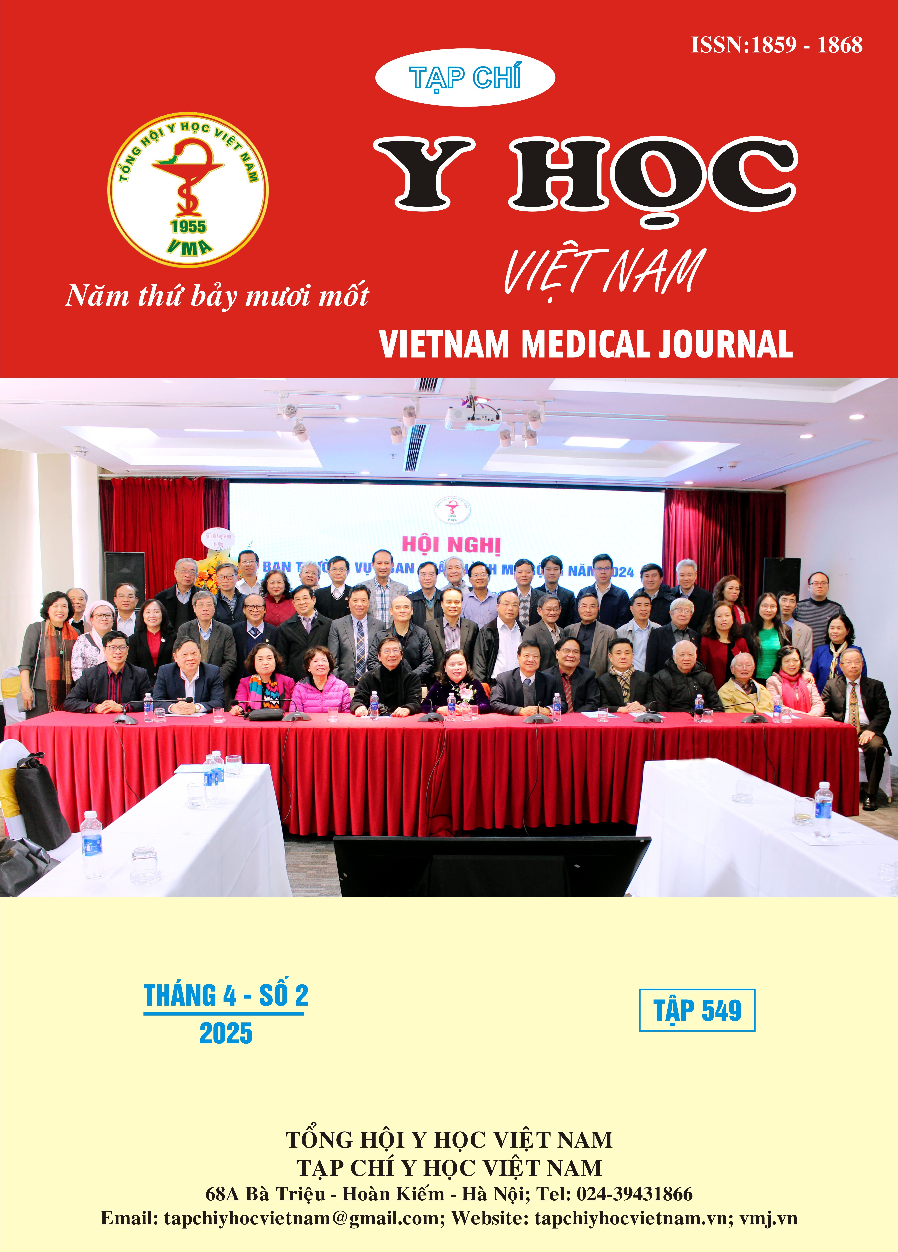CHANGES IN SALIVARY MALONDIALDEHYDE LEVELS AFTER THE EXTRACTION OF ASYMPTOMATIC IMPACTED MANDIBULAR THIRD MOLARS
Main Article Content
Abstract
Introduction: Malondialdehyde (MDA) is the main product of the lipid peroxidation process and has significant values in the diagnosis and follow-up progression of several oral diseases. In our previous study, we investigated the levels of MDA in the dental follicle, gingival tissue, and saliva of patients with a single asymptomatic impacted mandibular third molar (IMTM). This present study aims to measure and evaluate MDA level change in saliva after extraction on patients with an IMTM and compare salivary MDA concentration in patients with MITM with a healthy control, then determine whether saliva is a good means of assessing the level of oxidative biomarker. Material and method: A total of 48 subjects were divided into two groups: patients with a single asymptomatic IMTM and volunteers without impacted teeth. All people were collected saliva (before extraction in the study group). One month after extraction, in the study group, saliva samples were collected to evaluate the difference in oxidative stress. Results: Patients with asymptomatic MITMs manifested MDA concentration higher than healthy control subjects with statistical significance (p<0,05). One month after extraction, salivary MDA decreased considerably in the study group (p<0,05), with no difference compared to volunteers without impacted teeth. Conclusions: Salivary MDA concentrations are higher among patients with one asymptomatic MITM, but these levels decrease significantly one month after tooth removal. The large reduction in oxidative stress biomarker could recommend third molar extraction despite the absence of symptoms.
Article Details
Keywords
oxidative stress, malondialdehyde, mandibular impacted third molar
References
2. Lopez‐Jornet, P., A. Martinez‐Canovas, and A. Pons‐Fuster, Salivary biomarkers of oxidative stress and quality of life in patients with oral lichen planus. Geriatrics & gerontology international, 2014. 14(3): p. 654-659.
3. Song, F., et al., The effectiveness and cost-effectiveness of prophylactic removal of wisdom teeth. Health Technology Assessment (Winchester, England), 2000. 4(15): p. 1-55.
4. Esen, A., et al., Histopathological evaluation of dental follicles of clinically symptomatic and asymptomatic impacted third molars. Nigerian journal of clinical practice, 2016. 19(5): p. 616-621.
5. Cabbar, F., et al., Determination of potential cellular proliferation in the odontogenic epithelia of the dental follicle of the asymptomatic impacted third molars. Journal of Oral and Maxillofacial Surgery, 2008. 66(10): p. 2004-2011.
6. Tekin, U., et al., Malondialdehyde levels in dental follicles of asymptomatic impacted third molars. J Oral Maxillofac Surg, 2011. 69(5): p. 1291-4.
7. Graziani, F., et al., Systemic inflammation following non‐surgical and surgical periodontal therapy. Journal of clinical periodontology, 2010. 37(9): p. 848-854.
8. Camacho-Alonso, F., et al., Salivary myeloperoxidase and malondialdehyde are increased in patients exhibiting an asymptomatic mandibular impacted third molar. Medicina Oral, Patologia Oral y Cirugia Bucal, 2019. 24(4): p. e537.


